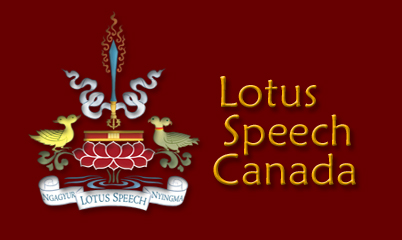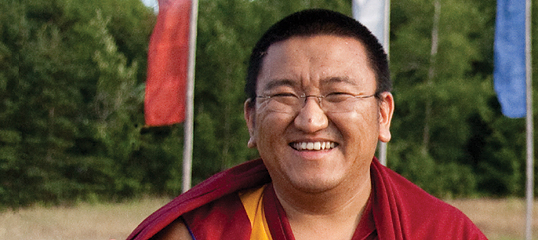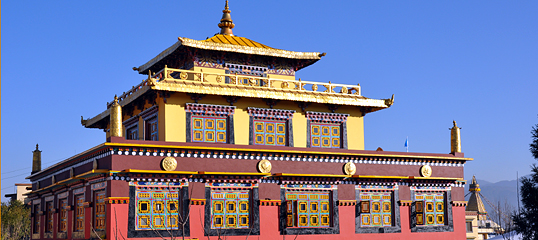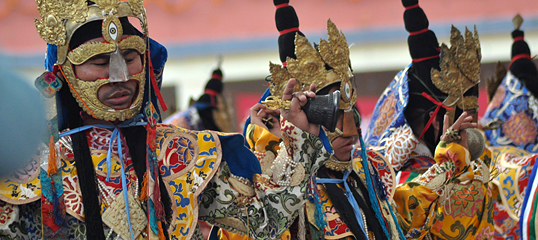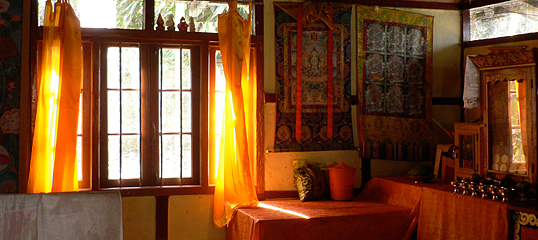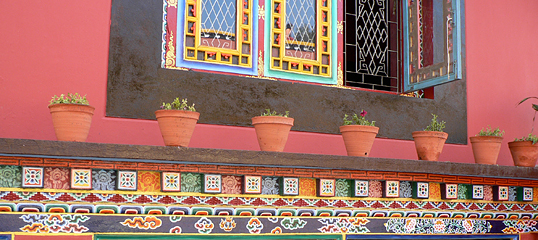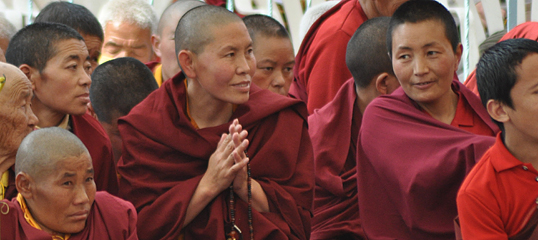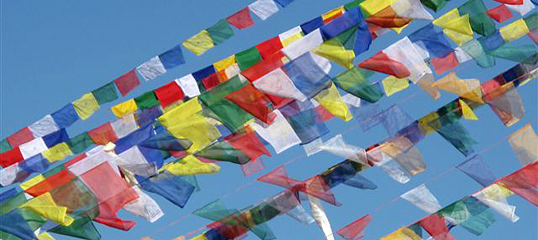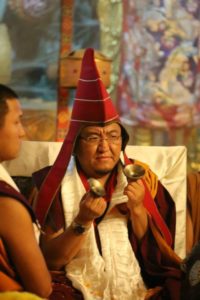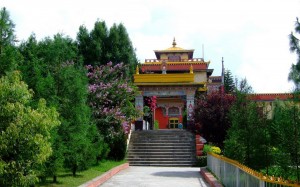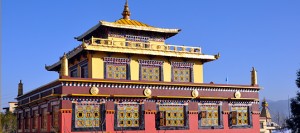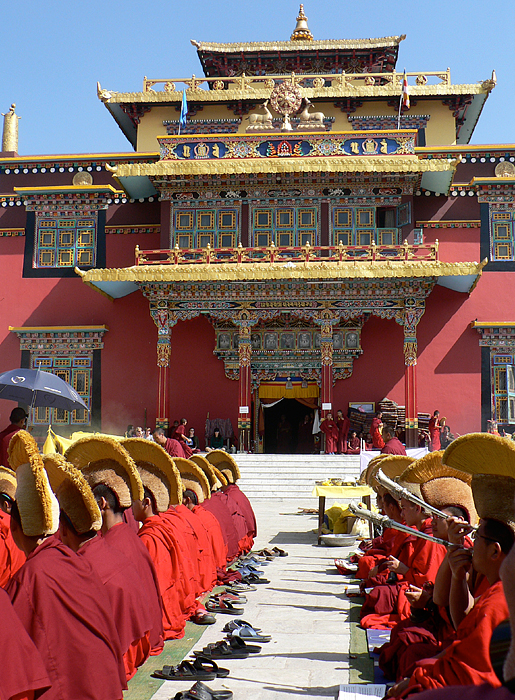The Changling Tulkus
Changling Rinpoche teaches Lotus Speech students practices drawn from several Nyingma and one Kagyu lineage of Tibetan Buddhism. Starting with the profound foundation teachings and practice, students practice progressively according to advice and teachings given to them by Changling Rinpoche and their practice inclinations.
The Changling Tulkus and the Rechung Kagyu Lineage
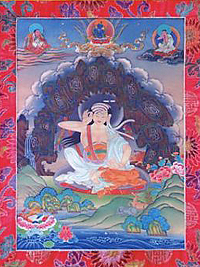
Rechungpa
Tsang Nyon Heruka was from Rechungpa’s lineage of students and is known as an emanation of Rechungpa. He was the Kagyu master who collected Milarepa’s life story. Tsang Nyon Heruka’s second purpose was to restore the Rechungpa teachings of the formless dakini. This is a strict teaching lineage – the lineage holders do not give public teachings but teach only a few select students.
Tsang Nyon Heruka had many students, but his heart student was Gotsang Repa Natsok Rangdrol. Gotsang Repa in turn had many students – of his two main students, one was Gothukpa Sangye Dorje. He is regarded as the incarnation of Tsang Nyon Heruka and was the first Changling Rinpoche, who Tibetans from Tsang called ‘Lama Rechungpa.’ This first Changling Rinpoche and the first Dalai Lama were contemporaries. Some subsequent Changling incarnations died very young. There have been fifteen incarnations altogether.
The Changling tulkus are regarded as the lineage holders of the Rechung Kagyu. The previous Changling Rinpoche wrote many commentaries on the Rechung Kagyu teachings – even the renowned Jamyang Khyentse Wangpo came to his monastery to receive the Rechung Kagyu lineage from him. The fourteenth Changling Rinpoche became more involved in the Nyingma tradition and thus had two types of students: Kagyu and Nyingma. The fourteenth Changling incarnation died at around 50 years of age.
When the fourteenth Changling Rinpoche passed away there were two incarnations. One is the present Changling Rinpoche at Shechen Monastery in Nepal and the other is still in Tibet. There is still a Kagyu group and a Nyingma group of students: the current Changling Rinpoche was brought up by the Nyingma group.
In Tibet there were two main seats of the Rechungpa lineage. One was Rechung Phug and the other was Changling. Changling is in the Shigatze district, between Shigatze and Sakya. Sakya Ngor monastery and Changling monastery are separated by one big mountain. The Kagyu practiced in this lineage is the Rechung Kagyu tradition. Until now this has not been taught in any western country.
The practice of the Rechung Lineage
Rechungpa lineage is a strict and subtle lineage. It has long been a secret lineage. Like his predecessors, Changling Rinpoche has started teaching the Rechung lineage practices to interested students. These Rechungpa teachings are rare in the East and West.
In June 2009 Changling Rinpoche taught from the Rechung lineage at Rechung Gar, a practice retreat held on Vancouver Island, British Cloumbia. This Rechung Gar retreat is the first time the Rechung lineage has been taught in the West. Changling Rinpoche’s teachers requested him to do this. Before Changling came to give these teachings, his monastery did four days of feast offerings to dakinis and others to get permission to give these teachings openly.
Changling Rinpoche received these teachings from Shechen Rinpoche, who received them from Changling’s previous reincarnation.
Read about the history of the Rechung Kagyu Lineage.
The Changling Tulkus and the Northern Treasures Lineage
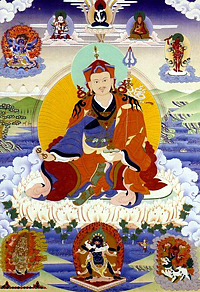
Padmasambhava
Since the fifteenth century, the line of Changling Rinpoches have practiced and maintained the Northern Treasures Lineage of Buddhist teachings. The Northern Treasures were the last teachings given by Padmasambhava before he left Tibet. After giving them, he hid them for a future generation.
In the late 14th century CE, Tulku Zangpo Drakpa found the famous Prayer in Seven Chapters. This he gave to Rigdzin Godem for whom they were the key to finding the main body of teachings. Later branches were recovered by Tennyi Lingpa (15th c.) and Garwang Dorje (17th c). Among its many famous teachings is the Gonpa Sangtal, one of the most sublime works on The Great Perfection among Padmasambhava’s vast teachings.
Decades ago, when the Chinese sought to occupy Tibet, many fled their homeland. These precious Treasures were dispersed and dwindled. Until now. The Northern Treasures Buddhist Fellowship is a newly created nonprofit organization dedicated to the preservation and practice of the treasures. The texts are being collected and translated. The oral teachings are being gathered, preserved and offered as courses. Read more about the Northern Treasures Text Archives project.
Rigdzin Godem and his successors
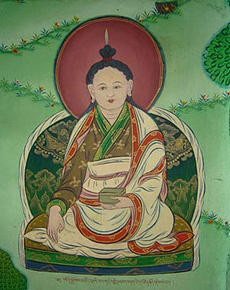
Rigdzin Godem
Rigdzin Godem withdrew the Northern Treasures from concealment in 1366 CE.
Rigdzin Godem’s son Namgyel Gompo, his student Gompo Dorje, and his consort were his main students. From these, flowed out three streams of teachings and practice until the time of the fourth Rigdzin Godem tulku, Pema Trinley who united these into one stream of practice.
Before Dordrak Rigdzin Chenpo Pema Trinley united the three main practice traditions, the Changling Tulkus were head of the branch which originated from Rigdzin Godem’s wife.
The eleventh and twelfth Changling Rinpoches engaged extensively in the Nyingma Northern Treasure practices and established the Northern Treasure tradition in Changling monastery.
The lineage carried on by Shechen Changchub Ling and Changling Rinpoche is the Northern Treasures tradition.
Read the history of the Northern Treasures Lineage.

